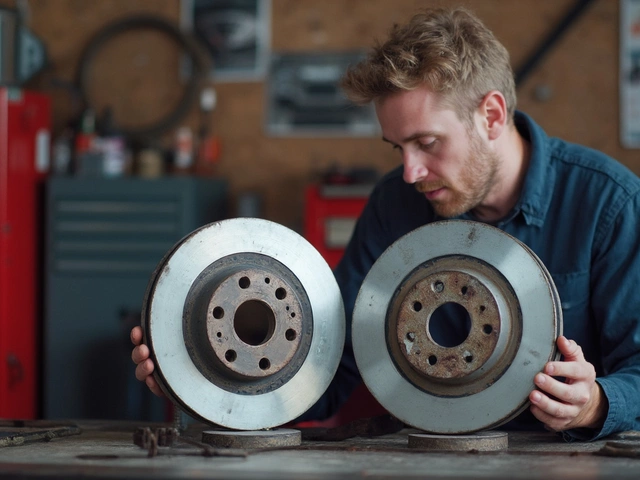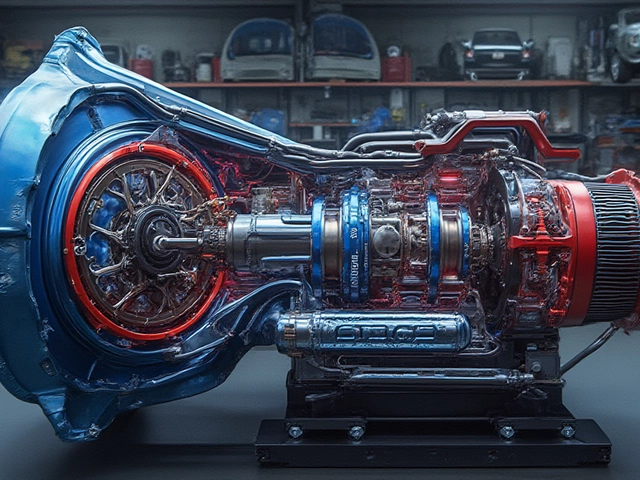Ever found yourself pondering whether splurging on a full exhaust system could actually give your car a horsepower boost? You're not the only one. It's a hot topic among car enthusiasts and a common question in auto shops.
The idea is straightforward. A full exhaust aims to improve the way gases exit your engine, potentially enhancing performance. But what does that mean in terms of real numbers? And is it worth the investment for your ride?
First off, it's good to grasp how an exhaust works and influences overall power. Simply put, it's about improving engine efficiency by reducing back pressure. This might sound technical, but in layman's terms, it's all about finding that sweet spot where your engine breathes just right without any hiccups.
- Understanding Exhaust Systems
- How Exhaust Affects Horsepower
- Real-World Performance Gains
- Choosing the Right Exhaust
- Installation and Maintenance Tips
Understanding Exhaust Systems
Alright, so let's break down what an exhaust system actually does and why it's a crucial part of your car's performance puzzle. The exhaust system is like your car's respiratory system, helping it breathe by getting rid of exhaust gases produced during combustion.
The system generally starts from the exhaust manifold, which collects gases from each cylinder. It then travels through pipes, often with a catalytic converter in the mix to cut down on harmful emissions. Finally, it exits through the muffler, which, as the name suggests, muffles the noise.
Components of an Exhaust System
- Exhaust Manifold: Attaches directly to the engine and channels the exhaust gases into a single pipe.
- Catalytic Converter: This device is like a mini lab, converting harmful pollutants into less harmful emissions before they hit the air.
- Resonator: Not always present, but it fine-tunes the exhaust note and further reduces noise.
- Muffler: The final stop for sound deadening and noise reduction.
And here's a fun fact: a well-designed full exhaust system can actually make your car sound sportier without annoying the neighbors, thanks to those mufflers and resonators.
Exhaust Flow and Performance
The key idea here is about optimizing exhaust flow. Efficient flow can reduce "back pressure," allowing your engine to push out exhaust gases more easily. Lower back pressure potentially increases horsepower by making it easier for the engine to bring in fresh air and fuel for combustion.
Think of it like unblocking a stuffy nose—more air can go in and out, letting you function better. In car terms, this can translate to a noticeable boost, though it usually varies depending on the vehicle make and model.
| Component | Function |
|---|---|
| Exhaust Manifold | Collects exhaust gases |
| Catalytic Converter | Reduces emissions |
| Resonator | Tunes exhaust sound |
| Muffler | Reduces noise |
And there you have it—your quick guide to how your car's lungs, aka the exhaust system, work. Knowing this is the first step in understanding if that full exhaust upgrade will lead to any real performance gains.
How Exhaust Affects Horsepower
Car enthusiasts often wonder how much of a performance boost can be gained by changing the exhaust system. At its core, a full exhaust system aims to make the exit of exhaust gases as efficient as possible, thus enhancing engine performance and potentially adding significant horsepower.
Here’s a quick science bit: When your engine’s cylinders fire, they expel gases that need to flow out quickly. A restricted exit path can force the engine to work harder, reducing performance. By improving this exit path with a full exhaust, you can decrease back pressure, allowing for a more efficient engine cycle.
Back Pressure: The Real Deal
Reducing back pressure is like taking a deep breath without anything blocking your airway. Think of the full exhaust system as that breathing passage. The less obstructed it is, the better your engine breathes and performs. According to an article from Car and Driver, "Lowering back pressure is key to gaining horsepower, offering up to a 10% increase in performance depending on the vehicle."
"Changing the stock exhaust helps engines breathe better, and better breathing means better performance." — Engine Dynamics Magazine
The Role of Exhaust Components
The full exhaust system contains several components, each playing a specific role in performance gains:
- Headers: Often the first step in exhaust upgrades, they replace the exhaust manifold, designed to direct exhaust gases from cylinders into the main system more efficiently.
- Catalytic Converter: Modern ones are less restrictive, converting harmful gases without compromising on flow.
- Muffler: While controlling noise, modern designs help maintain a free flow of exhaust.
- Cat-Back System: Building from the catalytic converter to the back, it often offers noticeable horsepower increases.
Does all this mean instantly more horsepower? Well, not exactly. Different cars react differently to changes. Variables like engine displacement, existing exhaust diameter, and even engine tuning can all impact the effectiveness of a new exhaust.
Real World Stats
Let's peek at some potential horsepower gains car owners have seen:
| Car Model | Average HP Gain |
|---|---|
| Ford Mustang GT | 10-20 HP |
| Civic Type R | 15-25 HP |
| Chevrolet Camaro SS | 20-30 HP |
Remember, these numbers can fluctuate based on the overall modifications and specific conditions of the vehicle. So, is a full exhaust worth it? If you're aiming for better performance and have other supporting mods, the answer leans towards a yes.

Real-World Performance Gains
Alright, let's get down to the nitty-gritty—what kind of power boost are we really talking about with a full exhaust system? The magic number usually tossed around is an increase of 5 to 10% in horsepower. But remember, this isn't guaranteed for every car. The actual gains depend on various factors like your car's current setup and engine type.
Factors Influencing Gains
Several key elements can influence the performance gains from a full exhaust upgrade:
- Engine Size: Bigger engines tend to benefit more because there's more gas flow to be optimized.
- Car Model: Some models have restrictive stock exhausts that respond well to upgrades, while others are already pretty efficient.
- Complementary Mods: You'll see better results if you pair the exhaust with other mods, like a cold air intake or ECU tune.
Real-World Examples
Take a look at some real-world examples. Owners of common models like the Ford Mustang and Subaru WRX have reported noticeable improvements after upgrading their exhausts. A Mustang owner shared a dyno test showing a gain of 15 horsepower with a new cat-back system, paired with an air intake. Another WRX driver saw a similar bump by swapping out the restrictive stock pipe with a performance variant.
When Gains Are Limited
However, it's not all rosy. Some car owners find the horsepower increase minimal or even negligible. This often happens when the stock system is already optimized or if the rest of the car's setup is bottlenecked by other components. Understanding these limitations is crucial before investing in a full exhaust.
Conclusion on Gains
In sum, a full exhaust setup often delivers measurable performance gains, but the extent varies. It's essential to assess your specific car model and the existing modifications. Sometimes, pairing the exhaust upgrade with other mods opens the door for higher efficiency and better power returns.
Choosing the Right Exhaust
Picking the right exhaust system for your car can feel like navigating a maze. It's not just about grabbing the first shiny set of pipes you see. You need to consider several factors to ensure you're actually going to gain those horsepower benefits.
Know Your Goals
First up, let's talk goals. Are you looking for an all-out performance boost, or is sound the real decider for you? Some drivers want that deep growl, while others prioritize squeezing out every last bit of power.
Material Matters
An important aspect is the material. Stainless steel is often favored because it resists rust and can withstand high temperatures. It might be pricier but can last longer compared to cheaper alternatives like mild steel. As automotive expert Jonathan Simmons says,
"Investing in a good exhaust system pays off in the long term, both in performance and durability."
Component Check
A full exhaust system typically includes headers, mid-pipes, and mufflers. Headers play a big role in reducing back pressure, making them crucial if you're after those extra few HP. However, if you are on a budget, swapping out just the muffler can give a noticeable change in sound without a hefty price tag.
Reputable Brands
There are plenty of exhaust brands in the market, but sticking to reputable names like Borla, MagnaFlow, or Flowmaster can ensure you're getting quality parts. They've been in the game for years and have a proven track record of performance improvements. Check out reviews or forums to see what fellow enthusiasts are saying about their experiences with different brands.
Installation
It's worth considering how you'll handle installation. While some DIYers can do it themselves, a proper installation by a professional ensures the system is fitted correctly, avoiding leaks or compatibility issues.
Horsepower isn't the only gain from a new exhaust. A weight reduction compared to stock parts and improved fuel efficiency might offer additional perks. But remember, the right choice is what aligns with your personal goals and budget, so weigh your options carefully.

Installation and Maintenance Tips
So, you've decided to upgrade to a full exhaust system. That's great! But before you roll up your sleeves, you should know that proper installation and maintenance play a significant role in getting the most bang for your buck.
DIY or Professional Install?
First decision: tackle it yourself or call in the pros. If you're comfortable with your tools and have a basic understanding of car mechanics, doing it yourself can save some cash. Just follow the instructions meticulously and perhaps watch a couple of online tutorials.
If that sounds overwhelming, a professional install is always a safe bet. Pros know all the ins and outs, ensuring no loose ends literally and figuratively.
Installation Steps
- Gather Supplies: Jack stands, wrenches, and the new exhaust systems components.
- Safety First: Secure your car on jack stands. Make sure it won't budge.
- Remove Old Exhaust: Unbolt it, keeping an eye out for rusted parts which can be stubborn.
- Install New System: Align and attach the new parts exactly as instructed. Ensure a snug fit to prevent leaks.
- Final Check: Double-check all bolts and clamps for tightness, then slowly lower your vehicle.
Maintenance Tips
After a successful install, don't forget about upkeep. Regular maintenance keeps performance top-notch and extends the life of your full exhaust.
- Visual Inspections: Check for corrosion or loose parts. Early detection saves headaches later.
- Clean Regularly: Rust and dirt buildup aren't just cosmetic issues—they can affect performance.
- Listen Up: Changes in sound may indicate a problem. It's your exhaust's way of telling you something's off.
- Schedule Check-Ups: Routine check-ups by a professional keep everything in line and ensure that nothing unexpected pops up.
If you're curious about how a full exhaust system affects your ride, consider a chat with fellow drivers who have done it. And remember, every car is a bit different, so what works for one might not be perfect for another.






